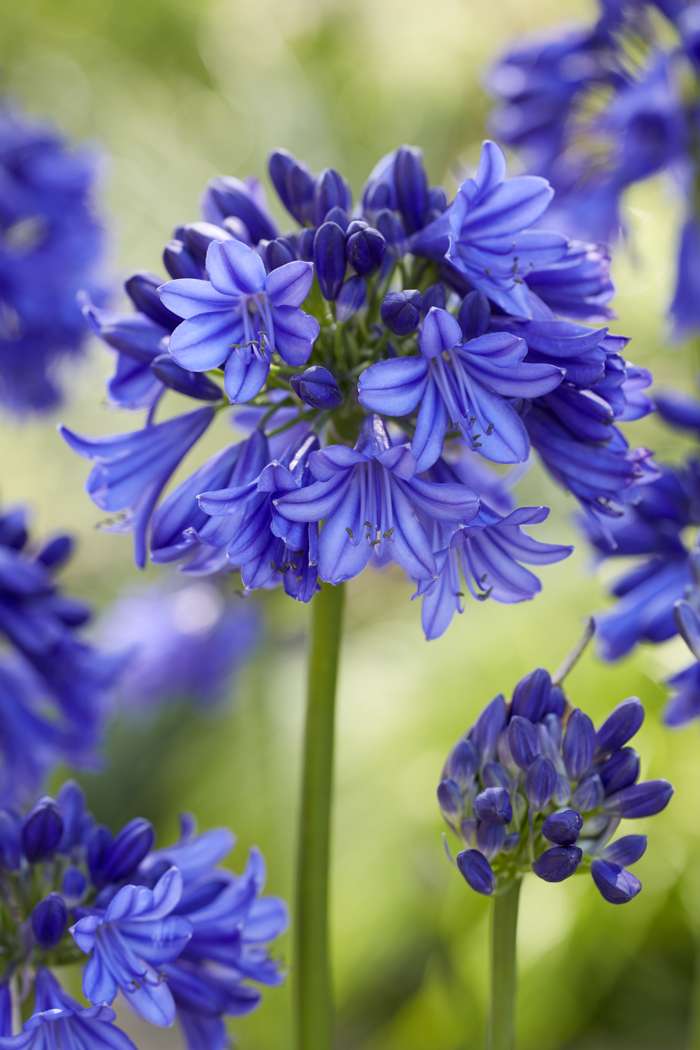Typical Agapanthus Issues and Exactly How to Resolve Them
Typical Agapanthus Issues and Exactly How to Resolve Them
Blog Article
Understanding the Art of Agapanthus Care: Necessary Actions for Healthy Growth and Dynamic Flowers
In the world of cultivation, the growing of agapanthus stands as a rewarding endeavor for those that look for to support these classy blooming plants. With their striking blossoms and elegant vegetation, agapanthus has actually captured the attention of gardeners worldwide. Nevertheless, attaining optimal development and dynamic blossoms needs a nuanced method that includes different important steps. From picking the appropriate selection to grasping pruning strategies, the journey towards cultivating flourishing agapanthus plants is complex and holds the vital to opening the full potential of these agricultural treasures.
:max_bytes(150000):strip_icc()/agapanthus-growing-guide-7368912_hero-a3585e4f9ffe4b99a73c7ad8eb4ebe48.jpg)
Choosing the Right Agapanthus Selection

When picking the right Agapanthus selection for your garden, think about elements such as climate suitability, blossom shade, and development practice. Additionally, take into consideration the environment in your area to make sure the Agapanthus range you pick can flourish in your certain conditions. Understanding the development habit of different Agapanthus varieties is vital for correct placement within your yard.
Ideal Planting Problems
Taking into consideration the optimum ecological requirements is important for effective Agapanthus growing. Agapanthus grows in well-draining soil with a slightly acidic to neutral pH degree. When growing, choose a place that receives full sunlight to partial color. In hotter climates, supplying some mid-day shade can avoid scorching of the fallen leaves. Agapanthus plants are sensitive to cool temperatures and must be secured from frost throughout winter months.
To ensure healthy growth and lively blossoms, plant Agapanthus bulbs at a depth of regarding 2-4 inches and space them 8-12 inches apart. Mulching around the base of the plants helps preserve moisture and suppresses weed development.
Watering and Feeding Tips
Keeping correct moisture degrees and giving crucial nutrients are key elements in the treatment program for Agapanthus plants. It is critical to strike a balance when it comes to watering Agapanthus. If overwatered, these plants choose regularly moist soil but are at risk to root rot. Throughout the expanding period, water deeply when a week, guaranteeing the soil is well-draining to avoid waterlogging. In hotter climates or during durations of dry spell, even more regular watering may be necessary to maintain the dirt uniformly moist. However, lower watering in the winter months to avoid water logged conditions.
Fertilizing Agapanthus is essential for promoting healthy and balanced growth and respected flowers. Apply a well balanced fertilizer, such as a 10-10-10 formula, in the very early spring as brand-new development arises. Repeat this application check this every 6-8 weeks throughout the growing period. Prevent excessive fertilizing, as it can bring about rich vegetation at the expense of flowers. Constantly adhere to the producer's instructions for proper dilution and application techniques. By following these watering and fertilizing tips, you can ensure your Agapanthus plants flourish and generate vivid, lasting flowers.
Trimming Strategies for Agapanthus
Trimming Agapanthus plants at the suitable times and with proper strategies is vital for preserving their health and advertising ideal growth and blooming. The optimal time to prune Agapanthus is in late wintertime or early springtime before brand-new growth emerges.
For flowered stems, wait till the flowers have actually withered and afterwards cut them back to the base. This not only cleans up the plant's appearance yet likewise encourages the advancement of new blossom buds. Deadheading spent blossoms can likewise redirect the plant's power into generating more blossoms instead of establishing seeds. However, if you wish to collect seeds for proliferation, leave some blossoms to mature and dry on the plant.
Keep in mind to make use of clean, sharp tools to make exact cuts and reduce the danger of presenting diseases. Agapanthus. Regular pruning will certainly help keep your Agapanthus looking cool and healthy and balanced while ensuring an abundant display screen of gorgeous flowers
Managing Common Insects and Illness
After ensuring proper pruning methods for Agapanthus, it is essential to deal with usual insects and diseases that can influence the wellness and vigor of these i thought about this plants. One typical insect that affects Agapanthus is the Agapanthus gall midge.
Furthermore, Agapanthus plants can suffer from origin rot if they are planted in inadequately draining dirt. By being attentive and taking prompt activity against parasites and illness, you can aid your Agapanthus plants prosper and produce lively blooms. Agapanthus.

Conclusion
To conclude, grasping the art of agapanthus care entails choosing the best range, supplying perfect planting conditions, proper watering and fertilizing, appropriate pruning techniques, and addressing typical bugs and conditions. By adhering to these crucial actions, you can make certain healthy and balanced development and lively flowers for your agapanthus plants. Keep in mind to consistently check and keep your plants to advertise their general wellness and durability.
To guarantee healthy and balanced growth and dynamic flowers, plant Agapanthus bulbs at a depth of about 2-4 inches and space them 8-12 inches apart. By following these watering and feeding ideas, you can ensure your Agapanthus plants flourish and create lively, lasting blooms.
One common parasite that influences Agapanthus is the Agapanthus gall midget. In addition, Agapanthus plants can experience from root rot if they are grown in improperly Home Page draining dirt. By adhering to these essential steps, you can guarantee healthy and balanced development and dynamic blooms for your agapanthus plants.
Report this page